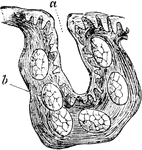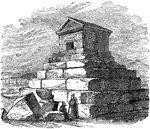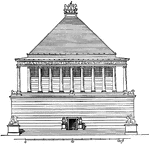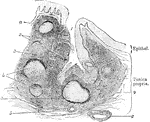Clipart tagged: ‘crypt’

Crypt
Lingual follicle or crypt. Labels: a, involution of mucous membrane with its papillae; b, lymphoid tissue,…

Tomb of Cyrus
"Cyrus caught sight of his brother Artaxerxes, whose person was revealed by the flight of his troops,…
Gland of Lieberkuhn
The glands or crypts of Lieberkuhn are simple tubular depressions of the intestinal mucous membrane,…

Mausoleum at Halicarnassus
The Mausoleum at Halicarnassus was a tomb built between 353 and 350 BC at Halicarnassus (present Bodrum,…

Tomb of Nævoleia Tyche at Pompeii
"For tombs of smaller dimensions various forms and abnormal decorations were employed. An ornamented…

Street of Tombs at Pompeii
"For tombs of smaller dimensions various forms and abnormal decorations were employed. An ornamented…

Crypt of Tonsil
A tonsil consists of an elevation of the mucous membrane presenting 12 to 15 orifices which lead into…